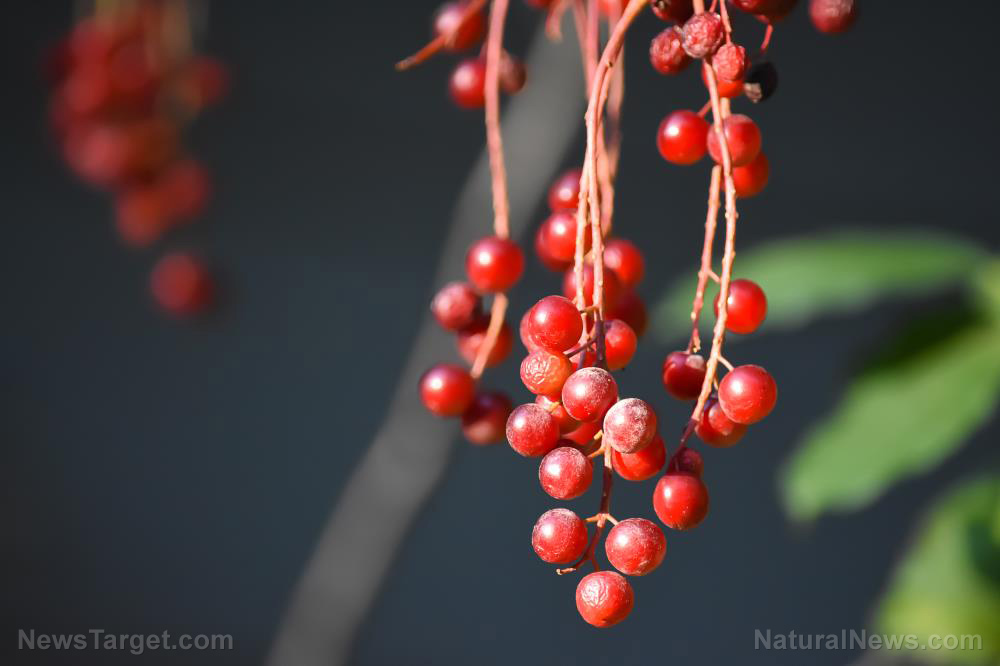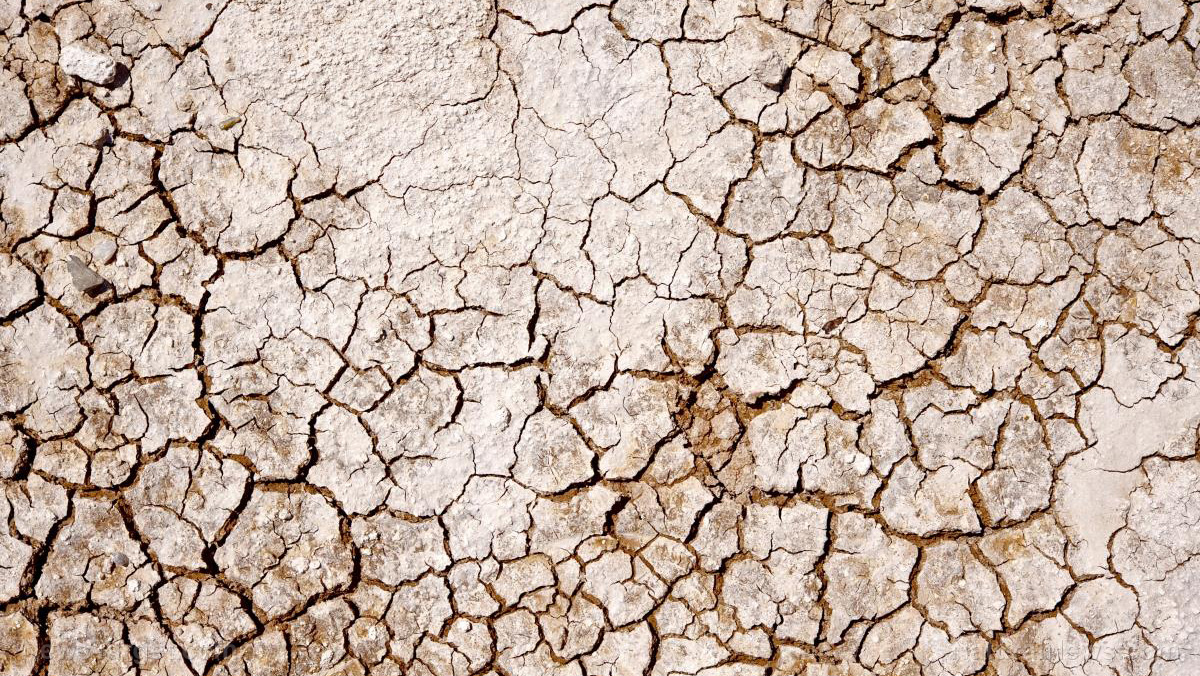Prepper medicine: How to use chokecherry, a versatile medicinal plant
06/09/2022 / By Zoey Sky

Despite the unappetizing name, chokecherries are a versatile food source for preppers. When prepared right, the berries can be used to make delicious fruit leather or sweet jelly.
Medicinally, chokecherry bark is used to make home remedies like a cold infusion, syrup and a tincture. These remedies are used to treat coughs, which are effective if you also have the flu. (h/t to PrepSchoolDaily.blogspot.com)
What are chokecherries?
Chokecherry (Prunus virginiana) is a large, deciduous shrub or small understory tree. The trees can grow from 20 to 30 feet tall and they often form thickets.
Also called bird cherry, bitter cherry and common chokecherry, chokecherry trees bear dense clusters of white flowers that are followed by red fruit that ripen to dark purple from August to September in the north, or from June to August in the south.
The plant’s common name is derived from the astringent or puckery taste of chokecherries, especially when immature or raw. When ripe, the fruit can be made into preserves and jelly.
Chokecherry foraging tips
You can find chokecherries in the mountains, most often near streams.
When foraging for chokecherries, keep an eye out for small, tree-like shrubs along woods edges or roadsides. The plant needs full sun to thrive, so you won’t find them deep in the woods.
Alternatively, you can cultivate them in your home garden for easier access. (Related: Prepper medicine: Combat antibiotic resistance with these medicinal herbs.)
Note that chokecherries won’t be ripe until they turn a dark purple, but their bright red fruits are easy to spot. Don’t bother picking unripe fruits because they taste bad.
Tips for identifying chokecherries
Chokecherries have two main distinguishing features: They grow in bunches and they have a single large seed.
Common buckthorn (Rhamnus cathartica) is a known “toxic look-alike,” but buckthorn fruit doesn’t grow in fruit clusters. Buckthorn berries tend to cluster together on the main branch.
Additionally, buckthorn berries have several small seeds within each fruit. Buckthorn bushes have lots of very sharp thorns that are often several inches long.
Chokecherry bushes, on the other hand, don’t have thorns.
Chokecherry fruits
The fruit of the chokecherry plant is small and round. It hangs in easy-to-pick clusters off the plant.
The fruits start out a light green color, then they turn yellow. Eventually, they turn bright red and become a deep purple or almost black when ripe.
Chokecherry bark
The bark of the chokecherry plant has small raised dimples, like many types of cherry trees. Note that they are less pronounced than the dimples on sour cherry trees or other forms of wild cherry found locally.
Preparations for chokecherry remedies
Native Americans use chokecherries for food and they use the bark medicinally for treating various conditions. For example, they use chokecherry to relieve the pain of labor and delivery associated with childbirth.
Chokecherries are also used as a remedy to reduce prostate inflammation.
All preparations for chokecherry remedies begin with gathering the chokecherry bark or berries. Collect young secondary branches without any older, fissured bark.
Next, remove and discard the smaller twigs and leaves. You also need to remove the outer bark.
Use a vegetable peeler to carefully peel off strips of the inner bark. The bark should give off an aroma of cherries or almonds. If it doesn’t, you can’t use it because it has no medicinal value.
The chokecherry bark needs to be dried immediately. The shelf life of dried chokecherry bark is about one year.
The bark is prepared into medicine in several ways. These chokecherry preparations work well with other herbs like licorice, mallow and mullein to more effectively suppress coughs.
Chokecherry cold infusion
Chokecherries are one of the few herbs that are prepared without hot water.
To make a chokecherry cold infusion, place one teaspoon of dried chokecherry bark in a tea ball and let it soak for one hour.
Chokecherry cough syrup
Once you’re done with this chokecherry cough syrup, take one to two teaspoons at least two to three times a day to treat an irritable cough or a dry, hacking cough.
Ingredients:
- 4 cups chokecherries
- 4 cups water (Add more if needed.)
- 1 cup wild cherry bark
- 1 cup raw honey
- 1/2 teaspoon almond extract
Steps:
- Make a decoction by simmering the chokecherries, water and wild cherry bark until it is cooked down to one cup of strong liquid.
- Strain the liquid and press out the remaining juice from the cherries.
- Add the honey and almond extract to the mixture. Stir the liquid and place the syrup in a pint jar.
- You can store the syrup in the fridge for up to six months. To extend the shelf life of the chokecherry syrup, add a 1/4 cup of brandy. Skip the brandy if you are giving the syrup to children.
Chokecherry tincture
To make this remedy, tincture dried chokecherry bark in vodka and glycerin. Use 30 to 60 drops of chokeberry tincture about two to three times a day.
These chokecherry preparations are often used to treat coughs, especially dry, irritated coughs associated with asthma, bronchitis or influenza, and if the patient is experiencing rapid respiration, rapid pulse or fever.
Use chokecherry cold infusion, cough syrup or tincture to treat pneumonia accompanied by sweating. These remedies are safe for children to use.
These chokecherry preparations can also be used to treat gastrointestinal issues such as colitis, diarrhea, dysentery, gastritis and ulcers.
Notes on toxicity
There are several myths about the toxicity of chokecherry. While it is occasionally fatal in livestock that consumes enormous quantities of the leaves, people don’t eat that many chokeberry leaves or seeds.
However, eating too much raw fruit can cause nausea and vomiting. Cooking the fruit into jams, syrups or puddings or drying the fruit in the sun will denature the toxins, making the fruit safe to consume.
Forage for chokecherries or plant them in your home garden so you can make a natural cough remedy using the fruit of this medicinal plant.
Visit SurvivalMedicine.news to read more articles about medicinal plants that you can use when SHTF.
Watch the video below to learn about herbal remedies for achiness, congestion, fever or a runny nose.
This video is from the Natural Remedies channel on Brighteon.com.
More related stories:
Prepper foraging tips: 6 Wild lettuce lookalikes to avoid.
Prepper medicine: How to use dyer’s woad, a natural antiviral.
Prepper medicine: How to use arrowroot, a tuber with medicinal properties.
Survival medicine: How to grow and use sunflowers as food and medicine.
Sources include:
Submit a correction >>
Tagged Under:
alternative medicine, chokecherry, emergency medicine, green living, herbal medicine, Herbs, homesteading, natural cures, natural medicine, natural remedies, preparedness, prepper, prepping, SHTF, survival, survival medicine, survivalist
This article may contain statements that reflect the opinion of the author
RECENT NEWS & ARTICLES
COPYRIGHT © 2017 DISASTER NEWS



















